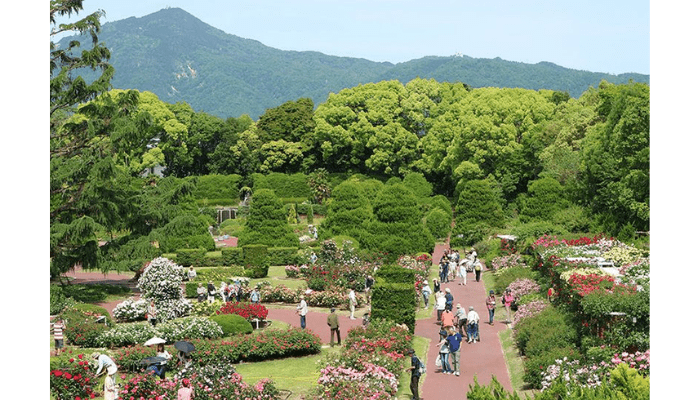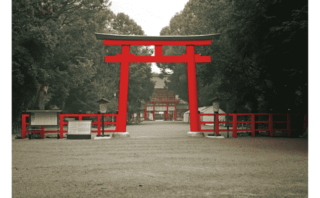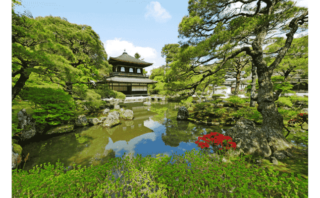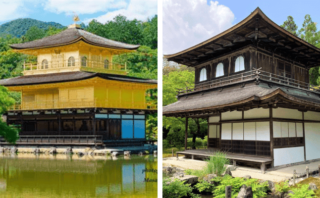Kyoto Botanical Gardens is located in Sakyo Ward, Kyoto City.
Established in 1924 as Japan’s first public botanical garden, it boasts a rich history. Covering an expansive 24 hectares, the garden is home to approximately 12,000 plant species.
Visitors can enjoy seasonal flowers in beautifully arranged flower beds, explore a greenhouse filled with tropical plants, and discover many other fascinating sights. In this guide, I’ll take you on a tour of the garden’s must-see spots, sharing insights from my own visit.
I’ll also introduce recommended sightseeing spots nearby, making this a helpful resource for your Kyoto trip or day out.
- About Kyoto Botanical Gardens
- History of Kyoto Botanical Gardens
- Kyoto Botanical Gardens: Visitor Information
- How to Get to Kyoto Botanical Gardens
- Highlights of Kyoto Botanical Gardens
- 2. The Grand Greenhouse & Kinoko Library
- 4. A Stylish English-Style Rose Garden & European Garden
- Recommended Attractions Near Kyoto Botanical Gardens
About Kyoto Botanical Gardens
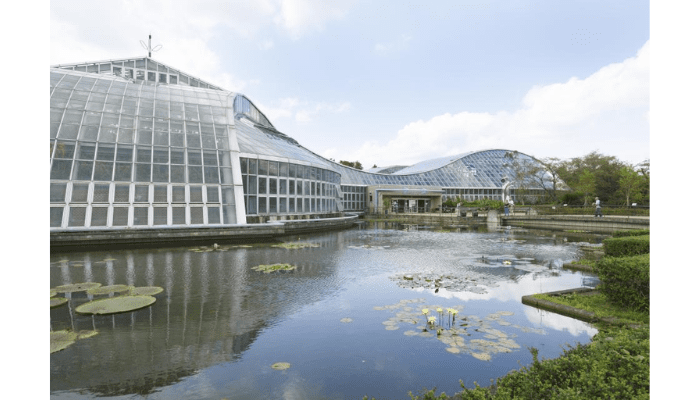
Kyoto Botanical Gardens is a public botanical garden located in the northern part of Kyoto City. It sits in a scenic area surrounded by Mount Hiei and the Higashiyama mountain range to the east, the Kamo River to the west, and the Kitayama mountains to the north. Established in 1924, it is Japan’s first botanical garden and a well-known sightseeing spot.
In the southern section of the garden, you’ll find highlights such as the Main Gate Flower Bed, where seasonal flowers bloom beautifully, and the Conservatory, which houses exotic plants like baobabs and Welwitschia. This area features carefully designed landscapes, showcasing a sense of artistic beauty.
The northern section offers a more natural setting, including Nakaragi Forest, the only natural woodland within the garden. Here, visitors can see plants growing in their natural state.
With one of Japan’s largest greenhouses and an expansive 24-hectare area home to approximately 12,000 plant species, Kyoto Botanical Gardens is often called a “living museum of plants.”
History of Kyoto Botanical Gardens
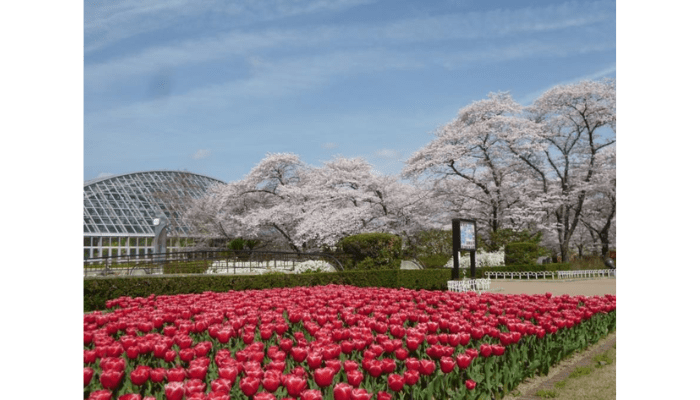
The land where Kyoto Botanical Gardens now stands was once a rural area with Nakaragi Shrine and Nakaragi Forest, which were associated with Kamigamo Shrine. This area remained untouched until the Meiji era.
The idea of creating a botanical garden began when Kyoto City purchased the land for the Taisho Enthronement Grand Exposition, a major event celebrating the enthronement of Emperor Taisho. However, due to opposition in the city council, the exposition was canceled. Instead, the city decided to establish a botanical garden, originally named the Grand Ceremony Memorial Botanical Garden.
During the garden’s construction, Nakaragi Forest, which preserved rare vegetation from the ancient Yamashiro Basin, was left untouched. As of 2019, the northern half of the garden still retains this natural woodland, and Nakaragi Shrine remains within the garden grounds.
In 1924, Kyoto Botanical Gardens officially opened as Japan’s first public botanical garden.
After World War II, the garden was temporarily closed when the occupying forces used the land to build housing. In 1957, the land was returned to Japan, and in 1961, the botanical garden reopened.
Since then, the garden has continued to evolve, adding attractions such as one of Japan’s largest conservatories, completed in 1992. Today, it remains a must-visit spot full of fascinating sights.
Kyoto Botanical Gardens: Visitor Information
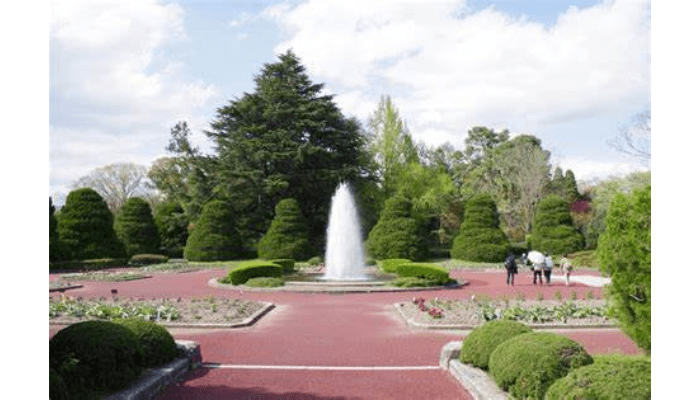
- Address: Shimogamo Nakaragi-cho, Sakyo Ward, Kyoto, Japan
- Map: [Google Maps]
- Access:
- 1-minute walk from Kitayama Station (Kyoto Subway Karasuma Line)
- 12-minute walk from Kitaoji Station (Kyoto Subway Karasuma Line)
- Phone: +81-75-701-0141
- Closed: December 28 – January 4
- Opening Hours:
- Garden: 9:00 AM – 5:00 PM
- Conservatory: 10:00 AM – 4:00 PM
- Official Website: [Kyoto Botanical Gardens]
Tips for Visiting Kyoto Botanical Gardens
Kyoto Botanical Gardens covers a vast 24-hectare area, so wearing comfortable walking shoes is recommended.
The garden is family-friendly, as admission is free for children (middle school age and younger) and seniors. This makes it a great spot for visitors of all ages, from families with young children to older adults.
With over 900,000 visitors per year, it is one of the most popular public botanical gardens in Japan. However, thanks to its spacious grounds, you can still enjoy a relaxing and uncrowded experience.
For dining, the garden features two charming cafés: Mori no Café and Kitayama Café, both surrounded by lush greenery.
The park is also designed with accessible pathways and wheelchair-friendly restrooms, making it easy for everyone to explore comfortably.
Kyoto Botanical Gardens: Admission Fees
General Admission
- Adults: ¥200
- High school students: ¥150
- Middle school students and younger: Free
Conservatory Admission
- Adults: ¥200
- High school students: ¥150
- Middle school students and younger: Free
Annual Pass
- Adults: ¥1,000
- High school students: ¥750
Booklet of 11 Tickets
- Adults: ¥2,000
- High school students: ¥1,500
How to Get to Kyoto Botanical Gardens
Kyoto Botanical Gardens is located in Shimogamo Nakaragi-cho, Sakyo Ward, in the northern part of Kyoto City. The garden has three entrances: the Main Gate, Kitayama Gate, and Kamogawa Gate, the latter of which was added in 2013 for improved accessibility from various directions.
The garden is well-connected by subway and bus routes, making it easy to reach within 30 minutes from Kyoto Station.
Since traffic congestion around Kyoto Station can be heavy, public transportation is recommended when visiting.
Getting to Kyoto Botanical Gardens by Bus
To the Main Gate
- From Kyoto Station: Take City Bus No. 1, 204, 205, 206, or Kita 8 and get off at “Shokubutsuen-mae” (Botanical Gardens Stop). The entrance is a 5-minute walk from the stop (about 30 minutes total).
- From Demachiyanagi Station (Keihan Line): Take City Bus No. 1 and get off at “Shokubutsuen-mae”. The entrance is a 5-minute walk (about 15 minutes total).
To Kitayama Gate
- From Kyoto Station: Take City Bus Kita 8 and get off at “Shokubutsuen-Kitamon-mae” (Botanical Gardens North Gate Stop). The entrance is right next to the stop (about 30 minutes total).
To Kamogawa Gate
- From Kyoto Station: Take City Bus Kita 8 and get off at “Kitayama-bashi Higashizume”. The entrance is right next to the stop (about 30 minutes total).
Getting to Kyoto Botanical Gardens by Subway
- To the Main Gate:
- 12-minute walk from Kitaoji Station (Kyoto Subway Karasuma Line).
- To Kitayama Gate:
- 1-minute walk from Kitayama Station (Kyoto Subway Karasuma Line).
Highlights of Kyoto Botanical Gardens
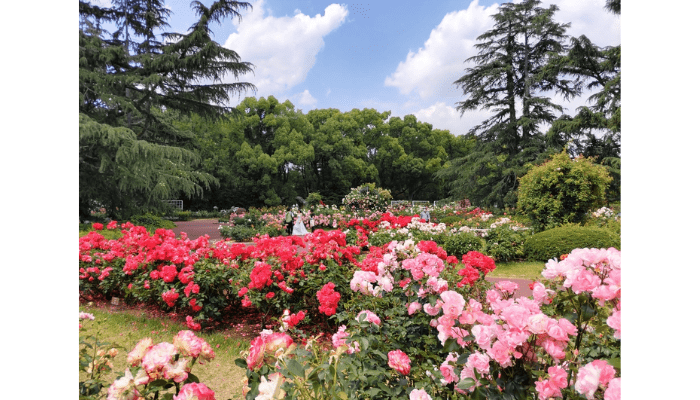
Kyoto Botanical Gardens is home to many fascinating attractions, including the Nakaragi Forest, a rare natural woodland that has existed since the garden’s founding, and one of Japan’s largest greenhouses. With over 12,000 plant species spread across a vast area, visitors can enjoy exploring the garden all day.
1. Nakaragi Forest
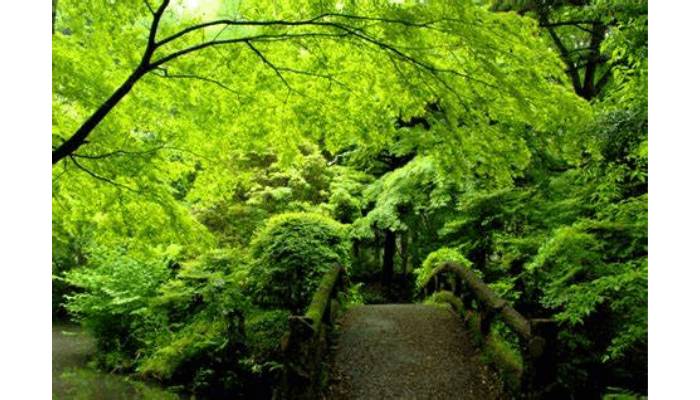
Located in the northern part of the garden near Kitayama Gate, Nakaragi Forest preserves the original vegetation of the Yamashiro Basin, making it a valuable natural area. It is the only remaining natural forest within the garden and features a mix of deciduous trees, such as hackberry and Japanese elm, along with evergreen species like chinquapin and oak.
Take a stroll through the 5,500-square-meter forest and enjoy a refreshing forest bath surrounded by untouched nature.
During autumn, Nakaragi Forest becomes a stunning foliage spot, with colorful leaves creating a breathtaking scene.
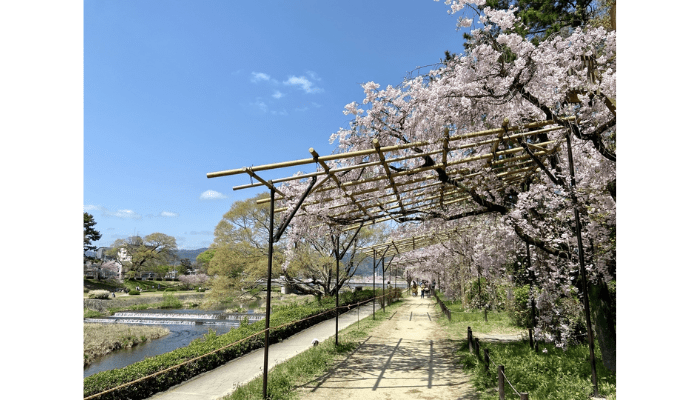
The forest is surrounded by four ponds, offering beautiful waterfront views. Alongside the ponds, visitors can find a traditional watermill and a small hut where they can relax while enjoying the peaceful scenery.
One of the highlights is the thatched-roof gazebo near Nakaragi Lotus Pond, where benches provide a perfect spot to admire the seasonal beauty. During certain times of the year, visitors can see lotus leaves floating across the entire pond.
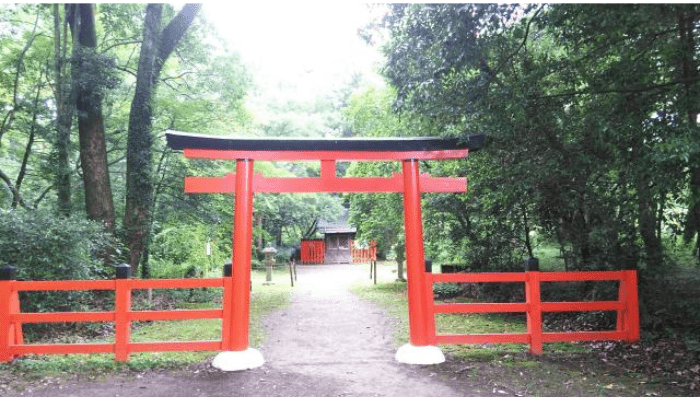
Within the forest lies Nakaragi Shrine, a former subordinate shrine of Kamigamo Shrine, also known as Ryuboku Shrine in ancient times.
This area was once a center for silk production and papermaking, and it is said to be the birthplace of Kyoto’s textile industry. The shrine’s deity has long been revered as a guardian of weaving, and since the botanical garden’s opening, it has also been considered a protector of the garden.
Surrounded by lush greenery, Nakaragi Shrine offers a mystical atmosphere, making it a special place to visit within the garden.
2. The Grand Greenhouse & Kinoko Library
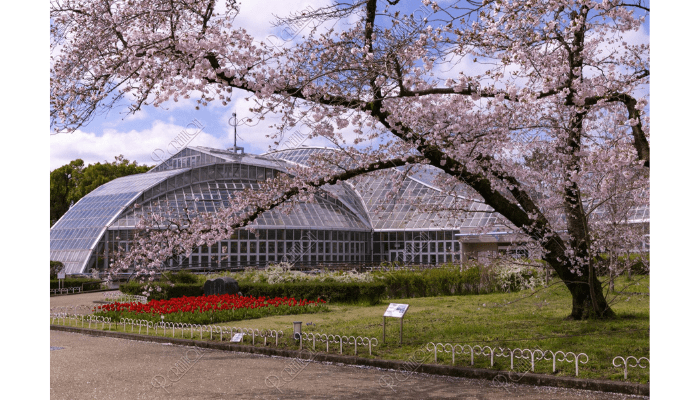
Located in front of Mirror Pond, the Grand Greenhouse is one of the largest in Japan. Its elegant design is inspired by Kinkaku-ji (the Golden Pavilion) floating on a pond, with the Kitayama Mountains providing a stunning natural backdrop.
Spanning 4,694 square meters and reaching a height of 14.8 meters, the massive greenhouse is divided into eight themed sections, each with a different landscape and climate. As you walk through, you’ll experience a tropical jungle, a desert filled with cacti, and many other unique environments. The greenhouse houses 4,500 plant species, including many that are exhibited for the first time in Japan.
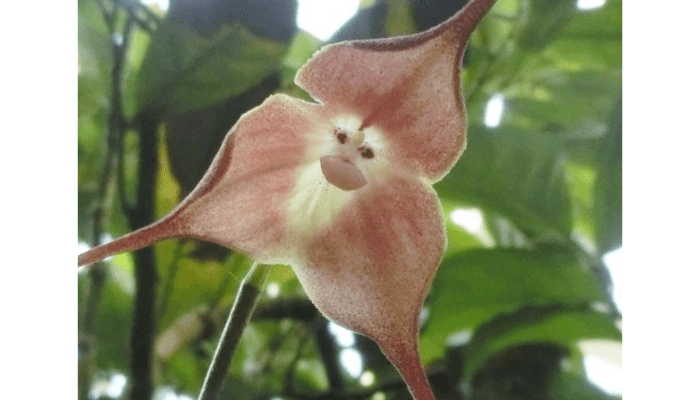
Inside, you’ll find a variety of rare and exotic plants. One of the highlights is the Monkey Orchid (Dracula gigas), a fascinating flower with petals that resemble a monkey’s face. This rare orchid is so unique that plant enthusiasts from all over Japan visit the garden just to see it.
The Monkey Orchid gets its scientific name, Dracula gigas, from its unusual appearance, which is said to resemble a dragon or even a vampire. Another must-see plant is the Hot Lips Plant (Psychotria poeppigiana), which has thick, bright red petals that look like plump lips. Discovering these rare and quirky plants is part of the fun!
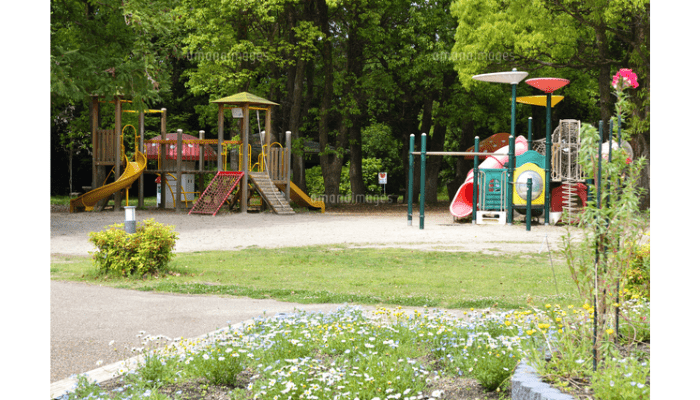
Kyoto Botanical Gardens is a great destination for visitors of all ages, including families with children.
Near the Main Gate, you’ll find Mirai-kun Square, a fun play area with two large play structures, complete with slides. The unique, futuristic design of the playground equipment makes it an exciting place for kids, while the nearby grassy lawn is perfect for a picnic or a relaxing break.
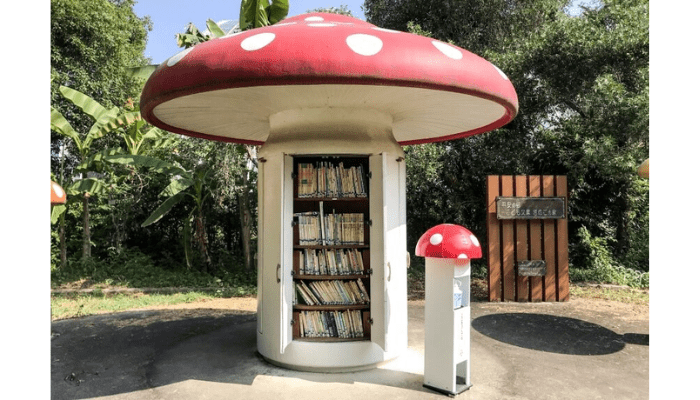
Right behind Mirai-kun Square, you’ll spot a whimsical mushroom-shaped building—this is the Kinoko Library! When you open its doors, you’ll find bookshelves filled with about 3,000 picture books and illustrated guides.
Also known as Kinoko Bunko, this charming outdoor library is a popular spot for both children and adults, especially on social media. Feel free to pick a book from the shelves and enjoy reading on a nearby bench while soaking in the peaceful atmosphere.
4. A Stylish English-Style Rose Garden & European Garden
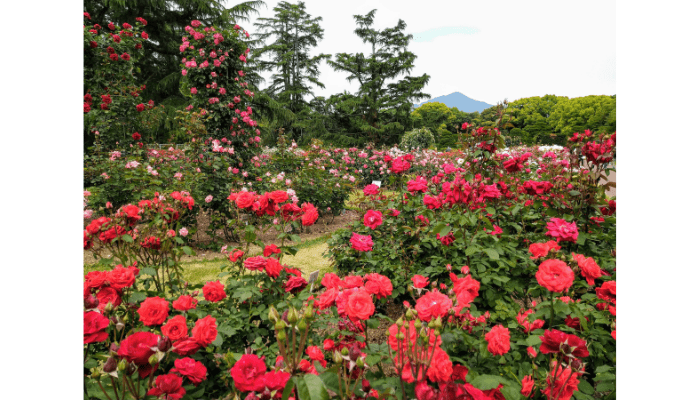
As you walk east from the Main Gate, you’ll come across the European Garden, a bright and elegant space filled with seasonal flowers. Among its many beautiful displays, the Rose Garden stands out with its sweet fragrance and vibrant blooms, drawing visitors in with its charm.
This stunning Rose Garden features approximately 270 varieties and 1,300 rose bushes in full bloom during two peak seasons each year: mid-May to early June and mid-October to early November.
I visited in late June, just after the peak season, but I was still able to enjoy a colorful display of roses throughout the garden. If you visit in late May, you can join the annual Rose Festival, where garden staff offer guided tours of the Rose Garden.
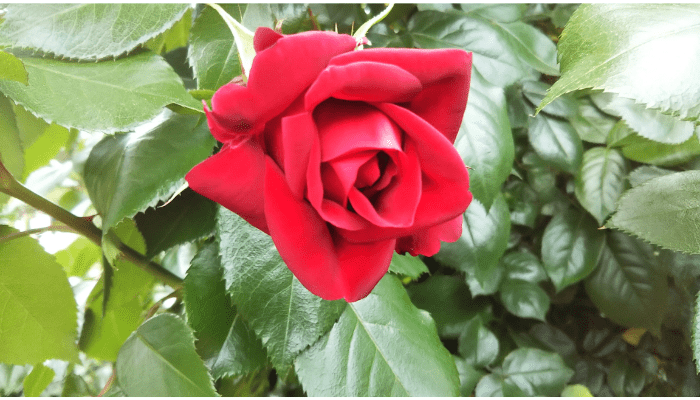
One of the most eye-catching roses in the garden is the République de Montmartre. Its deep crimson-red petals create a striking contrast against the lush green leaves, making it a truly breathtaking sight.
As you step closer, you’ll notice a delightful scent, a blend of classic rose and sweet raspberry. Since different roses bloom depending on the season, each visit offers a unique and ever-changing floral display.

Next to the Rose Garden, you’ll find the Sunken Flower Bed, set slightly lower than the surrounding area. This vibrant space is filled with Kirishima azaleas and seasonal flowers, creating a colorful display. At the center, a refreshing fountain adds to the garden’s elegance.
For a breathtaking photo, try capturing the Sunken Flower Bed with the Higashiyama and Mount Hiei mountains in the background—it makes for a truly dynamic and picturesque shot.
The Sunken Flower Bed is also home to a certified Display Garden, recognized by both the All-America Selections (AAS) and the Fleuroselect (FS) in Europe, two prestigious horticultural organizations. Kyoto Botanical Gardens is the only location in Japan to receive this certification, making it a must-see for flower lovers.
4. Seasonal Gardens & Flower Beds
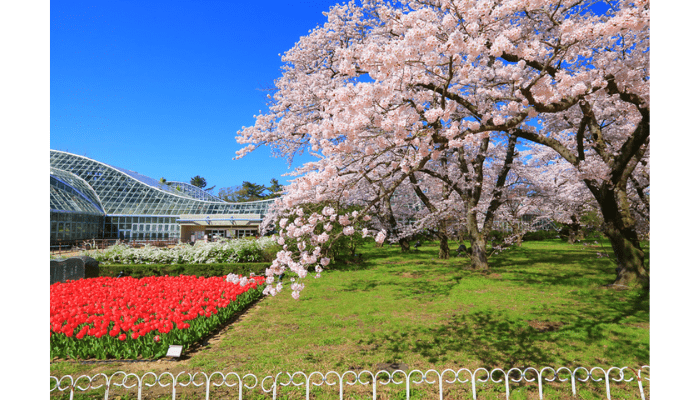
Just beyond the Main Gate, north of the Conservatory, you’ll find a grove of cherry trees that bursts into full bloom in early April.
During peak season, Somei Yoshino and Yaebenishidare cherry blossoms bloom all at once, creating a breathtaking spring spectacle. With 450 cherry trees scattered throughout the garden, this seasonal display is a true symbol of spring in Japan. Beyond the cherry trees, many other plants bloom in spring, making it one of the most vibrant and colorful times to visit.
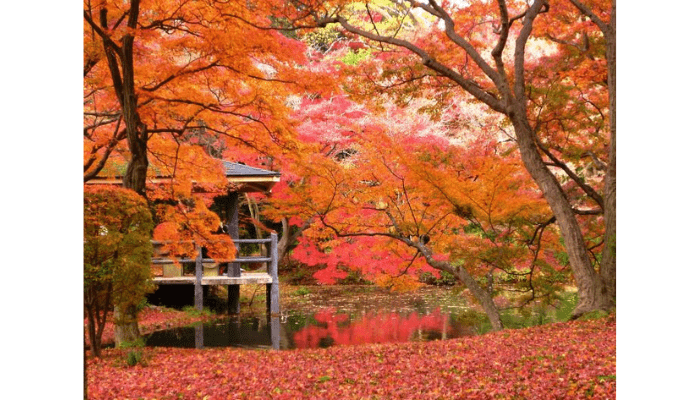
When autumn arrives, Kyoto Botanical Gardens transforms into a spectacular fall foliage spot.
In Hanaki no Mori, which we introduced earlier, maple trees are planted along the four ponds. As the leaves turn red and orange, their reflections on the water create a magical autumn scene. The cool and comfortable temperatures of fall make it an ideal time to stroll through the spacious garden and admire the colorful foliage.
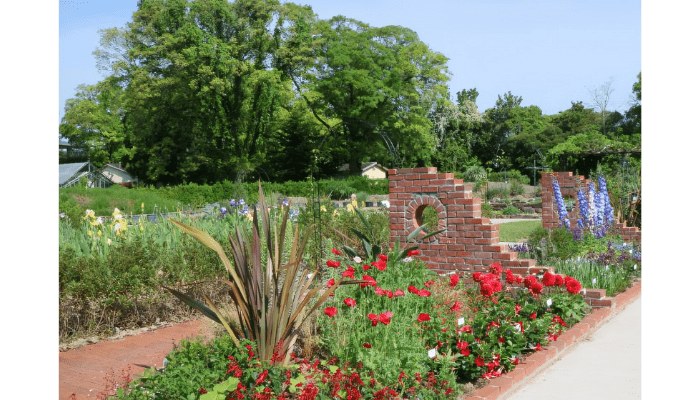
Near the Kamogawa Gate, you’ll find Shikisai Hill (Four Seasons Color Hill), a special area featuring a wide variety of seasonal plants and flowers.
This area is designed to blend natural landscapes with different environments. You’ll see waterways, ponds, rolling hills, and even an English-style garden, each supporting different plant species. The gardens feature aquatic plants, useful herbs, and seasonal flowers, allowing visitors to experience the changing seasons through nature.
The brick flower beds, vine-covered archways, and water garden exhibits offer a visually diverse and ever-changing experience, making it a delightful place to explore.
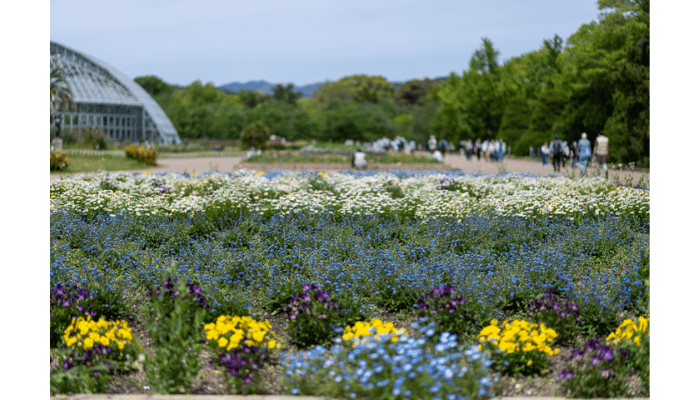
Kyoto Botanical Gardens is home to many stunning flower beds throughout the park.
- Wild Garden (near the North Gate) – A naturalistic garden where plants are arranged to flow with the landscape of trees, stone arrangements, and pathways.
- Main Entrance Flower Bed – A vibrant display of seasonal flowers that welcomes visitors as they enter through the Main Gate.
- Iris Garden – Home to 10,000 irises, this elegant garden is at its peak beauty in early summer.
Each season brings different flowers into bloom, so planning your visit around peak bloom times will ensure the best experience.
Recommended Attractions Near Kyoto Botanical Gardens
Kyoto Botanical Gardens is located in the northern part of Kyoto City. The surrounding area is home to fascinating attractions, including Shimogamo Shrine, a famous power spot, and a unique art museum where you can view reproductions of world-renowned paintings.
1. Kyoto Prefectural Garden of Fine Arts
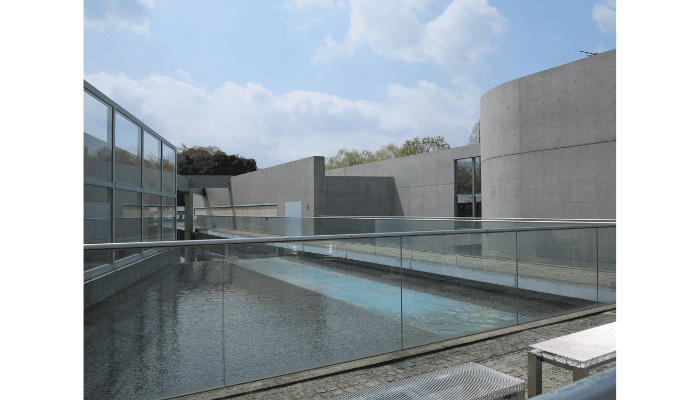
Right next to Kyoto Botanical Gardens, just a short walk from Kitayama Station on the Kyoto City Subway, you’ll find the Kyoto Prefectural Garden of Fine Arts.
This one-of-a-kind museum specializes in ceramic tile reproductions of famous paintings. The artworks are transferred onto ceramic panels using a special process that preserves the details of the original masterpieces. Unlike traditional paintings, ceramic artworks do not fade or deteriorate, allowing visitors to enjoy them for generations to come.
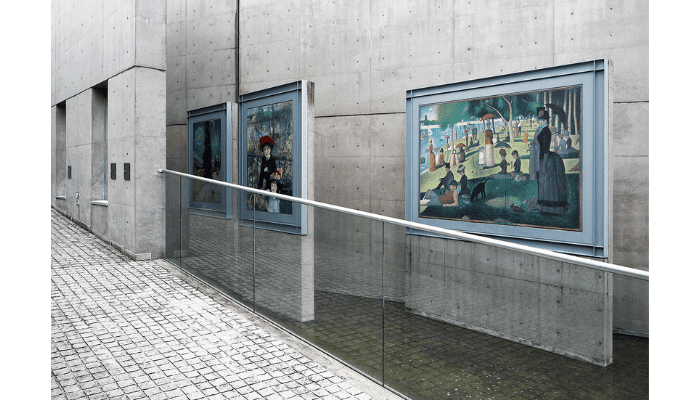
Designed by the renowned architect Tadao Ando, this open-air gallery is the world’s first corridor-style art garden, where visitors can admire paintings while strolling through a beautifully designed space. The museum features eight masterpieces, including Michelangelo’s “The Last Judgment” and Georges Seurat’s “A Sunday Afternoon on the Island of La Grande Jatte”.
A combination ticket for both Kyoto Botanical Gardens and this museum is available for ¥250 for adults and ¥200 for high school students.
Kyoto Prefectural Garden of Fine Arts
- Address: Shimogamo Hangicho, Sakyo-ku, Kyoto, Japan
- Google Maps: [View Map]
- Access:
- Short walk from Kitayama Station (Kyoto City Subway Karasuma Line)
- 5-minute walk from Kitayama Ekimae Bus Stop
- Phone: 075-724-2188
- Closed: December 28 – January 4 (plus maintenance closures)
- Hours: 9:00 AM – 5:00 PM
- Admission:
- Adults: ¥100
- Free for children under junior high school age and seniors
- Official Website: [Kyoto Prefectural Garden of Fine Arts]
2. Shimogamo Shrine

Shimogamo Shrine, officially called Kamo Mioya Shrine, is one of Kyoto’s most historically significant and spiritually powerful shrines. Located just a short walk from the Shimogamo Jinja-mae bus stop, it is easily accessible by city bus routes 1 and 205 or via the subway from Kitaoji Station.
This ancient shrine features two main halls, both designated as National Treasures of Japan. In 1994, Shimogamo Shrine was recognized as a UNESCO World Heritage Site as part of the “Historic Monuments of Ancient Kyoto,” highlighting its cultural and historical importance.

Near the main shrine buildings, visitors can find several sacred spots known for their spiritual energy:
- Koto-sha (Shrine of the Twelve Zodiac Signs): This shrine enshrines the guardian deities of each zodiac sign.
- Mitarashi-sha Shrine: Dedicated to a deity of purification and protection from misfortune, this shrine is known for its holy spring water.
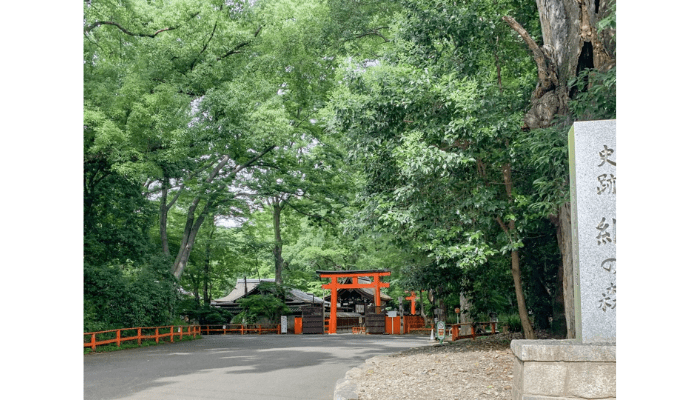
The shrine approach passes through Tadasu no Mori, a vast ancient forest that has remained largely unchanged since the 3rd century BCE. Covering an area three times the size of Tokyo Dome, this rare primeval woodland is also part of Kyoto’s UNESCO World Heritage sites.
A clear stream runs through the forest, creating a tranquil atmosphere where visitors can enjoy a refreshing forest walk. During autumn, the leaves turn brilliant shades of red, making it a perfect spot to enjoy the fall foliage while heading toward the shrine. Many classical poems from the Heian period describe the beauty of this historic forest, which has been cherished for centuries.
Shimogamo Shrine
- Address: 59 Shimogamo Izumigawa-cho, Sakyo-ku, Kyoto, Japan
- Google Maps: [View Map]
- Access:
- Take Kyoto City Bus 1 or 205 and get off at Shimogamo Jinja-mae, then walk a few minutes.
- From Kitaoji Station (Kyoto Subway Karasuma Line), take a short bus ride.
- Phone: 075-781-0010
- Hours: 6:30 AM – 5:00 PM
- Admission: Free
- Official Website: [Shimogamo Shrine]
3. Ginkaku-ji

Ginkaku-ji, officially known as Jisho-ji Temple, is a Zen temple in Kyoto’s Higashiyama district. It is easily accessible by taking Kyoto City Bus 32 or Rapid Bus 100 from JR Kyoto Station and getting off at Ginkaku-ji-mae. The temple is just a 5-minute walk from the bus stop.
Ginkaku-ji is often seen as a counterpart to the golden Kinkaku-ji. While Kinkaku-ji (Golden Pavilion) represents the opulent Kitayama culture, Ginkaku-ji (Silver Pavilion) embodies Higashiyama culture, emphasizing simplicity, elegance, and the aesthetic of wabi-sabi (imperfect beauty).

The temple grounds feature several must-see spots, including:
- Kannon-den (Silver Pavilion) – A designated National Treasure, this two-story wooden hall was designed in the style of Kinkaku-ji’s Golden Pavilion, but instead of gold leaf, it has a simple, refined black lacquer finish. It is surrounded by a beautiful pond and seasonal gardens.
- Ginsadan (Sea of Silver Sand) – A carefully raked sand garden with striking wave-like patterns, creating an artistic and serene atmosphere.
- Kogetsudai (Moon Viewing Platform) – A small cone-shaped sand mound that is believed to reflect the moonlight at night.

For a breathtaking view of the entire temple grounds, head up to the observation deck on the hillside. From here, you can take in a panoramic view of Ginkaku-ji, including the Silver Pavilion, the raked sand gardens, and Tojudo Hall.
On the way to the observation deck, you will also find the Ochano-i Garden, where fresh spring water was once used for Japanese tea ceremonies.
Ginkaku-ji
- Address: 2 Ginkakuji-cho, Sakyo-ku, Kyoto, Japan
- Google Maps: [View Map]
- Access:
- Take Kyoto City Bus 32 or Rapid Bus 100 from JR Kyoto Station and get off at Ginkaku-ji-mae (6-minute walk from the stop).
- Phone: 075-771-5725
- Hours:
- Summer (March – November): 8:30 AM – 5:00 PM
- Winter (December – February): 9:00 AM – 4:30 PM
- Admission:
- Adults & High School Students: ¥500
- Elementary & Junior High School Students: ¥300
- Children under school age: Free
- Official Website: [Ginkaku-ji Temple]
Kyoto Botanical Gardens is Japan’s first public botanical garden, featuring a vast and beautifully maintained landscape. It is home to a variety of seasonal flowers and plants, making it a great place to visit all year round.
Some of the must-see spots include:
- The Conservatory – A large greenhouse showcasing tropical and rare plants.
- Nakaragi no Mori (Nakaragi Forest) – A serene area known for its cherry blossoms in spring and colorful foliage in autumn.
With different flowers blooming each season, Kyoto Botanical Gardens always offers a new and beautiful experience no matter when you visit!
